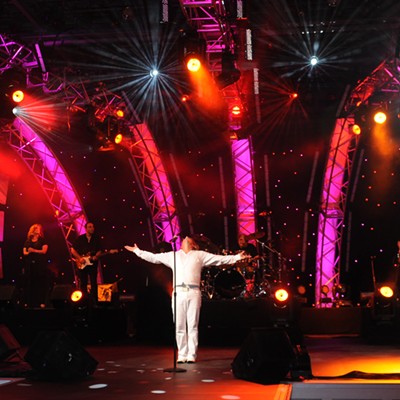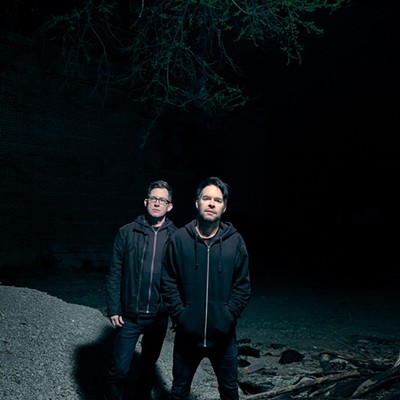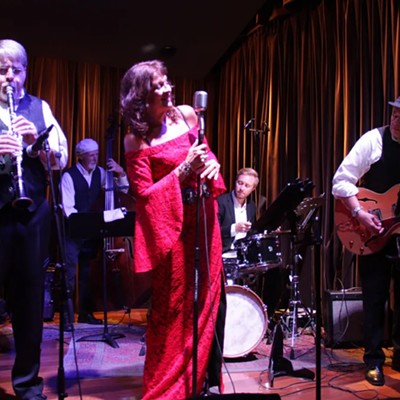Chastity Belt knew they were onto something when the music they began playing for drunken college students could impress an entirely different audience.
Guitarists Julia Shapiro and Lydia Lund, bassist Annie Truscott and drummer Gretchen Grimm formed the band on a lark when they were students at Whitman College in Walla Walla, Washington. But after moving to Seattle, they kept the band going, and, before long, their pop-punk songs were captivating larger, more serious audiences.
“We didn’t expect it to come this far at all. It was a total joke,” Shapiro says. “We started out not taking it very seriously and having fun with it, but then we realized we could keep doing it and make it what our lives are now.”
Playing music is indeed the focus now for the quartet, with extensive touring this year in support of Time To Go Home, the band’s second album, which came out in March on Hardly Art, a subsidiary of the venerable Sub Pop.
Reflecting on the band’s quick rise, Shapiro says starting Chastity Belt with no fear and no agenda allowed the musicians time to feel comfortable before taking the next step.
“Since we didn’t take it that seriously, it wasn’t a huge bummer if we fucked up or didn’t play that well,” she says. “It made it less intimidating to start a band from scratch.”
The name even came before the band. The four friends would chant it at parties, telling people they were in a band before they actually started playing music. Since they’re stuck with the name Chastity Belt, Shapiro says, they’re glad it’s a good one.
To go along with the name, the band had a party motif to the music, writing songs with an in-your-face humor that was a perfect fit for college parties.
“I kind of wrote the easiest possible songs at first because I didn’t know what I was doing. I’d never really written songs before,” Shapiro says. “I guess I wanted them to be funny and because we were playing at parties, it ended up being mostly party music.”But the party music grew more complex as the band developed and found they had an audience that was looking for more.
“When we started playing shows in Seattle, we realized that people who take music seriously could enjoy our music,” Shapiro says. “We were used to just playing to drunk college students. Of course they’re going to think it’s good. They’re wasted.”
Chastity Belt found their songs taking on a more serious tone, both lyrically and musically. After releasing debut album No Regrets on the small Seattle label Help Yourself Records, Chastity Belt caught the attention of Hardly Art.
“It was a gradual thing,” Shapiro says. “Moving to Seattle and going to shows and seeing other bands play and realizing what sort of music we liked listening to and making really shaped us, but we didn’t really do it consciously.”
The songs on Time to Go Home are sharp, witty, dark and occasionally laced with a distinctly youthful feminism, largely dealing with maturity and identity, and the sort of questions that emerge after the party is over. Yet there’s still plenty of edgy humor in the lyrics on songs like “Cool Slut,” “Joke,” “On The Floor” and “Trapped.”
“All my lyrics are things that I would just actually say,” Shapiro says. “It’s not super conscious, but I do want our songs to say something meaningful. There’s no point in making music if you don’t say something.”
The song “Time to Go Home” both closes the album and provides a fitting title for the record.
“It’s something that I found myself saying a lot on drunken nights: ‘Time to go home,’” Shapiro says. “I feel like there are a few songs on the album that are about the morning after. It’s kind of like hangover music.”
To record, Chastity Belt teamed up with producer José Díaz Rohena at a deconsecrated church and former sail factory in Anacortes, north of Seattle. Called the Unknown, the studio gave the band great sound and time to focus.
“It had some nice natural reverb and we recorded it all to tape,” Shapiro says. “That gave it a nice effect. We took five days and it was pretty chill.”
The band filmed a music video for “Joke,” the oldest song on the album, using tour footage to make a tongue-in-cheek, slice-of-life clip.
“We didn’t really want to do a boring band video where we were just standing in front of a wall,” Shapiro says. “In the past, we’ve done videos when the person making the video takes control. We wanted to take our own ideas and show people what we’re like. We thought of some ideas that would be funny. It’s just what our personality is.”







